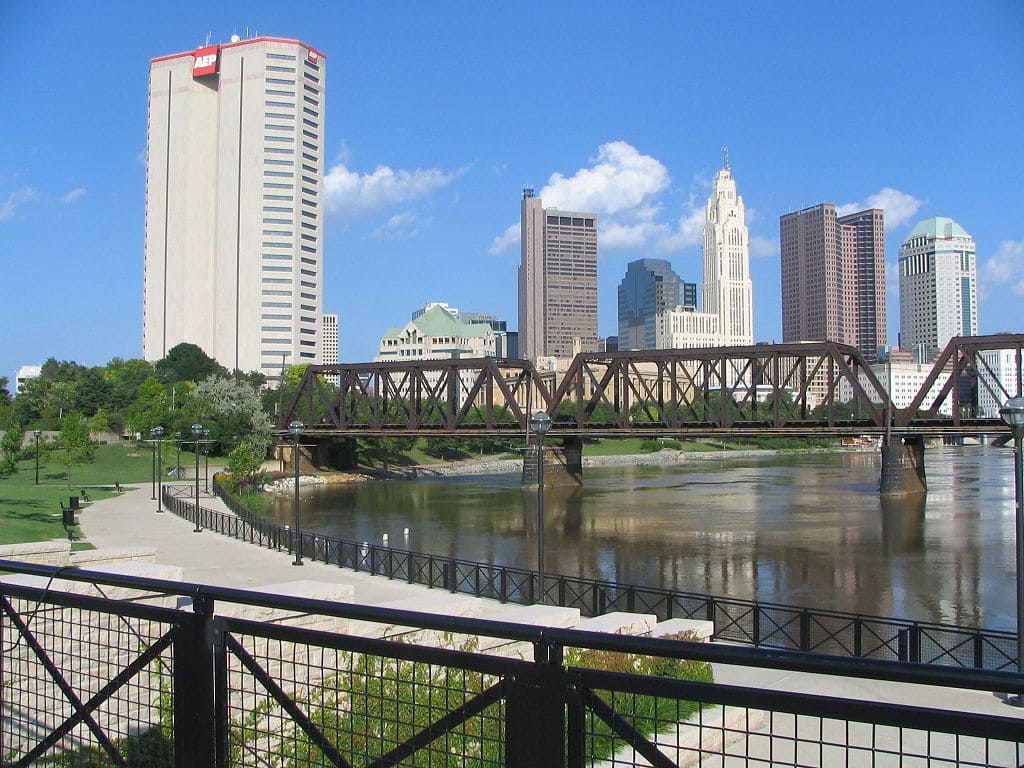Important Things to Know Before Moving to Ohio

Thinking about making Ohio your new home? Whether you’re drawn by job prospects, a desire for a lifestyle change, or any other reason, it’s crucial to get to know your potential new digs. This guide aims to offer you some real-life insights into the ins and outs of what it’s like living in Ohio, empowering you to make a well-informed decision before taking the plunge.
Things to know before moving to Ohio
Nestled in the heart of the Mideast, Ohio stands as a diverse and dynamic state with a character all its own. From the urban bustle of cities like Columbus and Cleveland to the serene landscapes stretching across rural towns, Ohio presents a tapestry of experiences for residents and visitors alike.
Ohio’s rich history is etched into the very fabric of its cities. Relocation from big cities is quite popular, such as moving from Boston to Columbus, as the state capital, thrives as a hub of innovation and culture, with a skyline that echoes the progress of a state at the forefront of change. Cleveland, perched on the shores of Lake Erie, tells a tale of industrial prowess, now harmonizing with a vibrant arts scene and the iconic Rock and Roll Hall of Fame. Cincinnati, with its historic architecture and the meandering Ohio River, beckons explorers to uncover its unique charm.
But Ohio is more than just urban landscapes. Venture into the rolling hills of Amish Country, where time seems to slow down, offering a glimpse into a simpler, more traditional way of life. The quaint villages and open fields here create a contrast to the lively city scenes, showcasing the state’s remarkable diversity.
As a melting pot of cultures and traditions, Ohio’s culinary scene mirrors its diversity. From hearty Midwestern comfort food to international flavors woven into the fabric of the cities, Ohio invites you on a culinary journey. Whether you’re savoring Cincinnati chili, indulging in farm-to-table delights, or exploring the ethnic enclaves offering authentic cuisine, Ohio’s food scene is as eclectic as its population.
But relocation to a new state is not only about cuisine and beautiful landscapes. It also requires an understanding of its laws and regulations to ensure a smooth transition. Here are some moving to Ohio things to know you should be aware of before relocating here:
- Driver’s License and vehicle registration. Ohio requires new residents to obtain an Ohio driver’s license within 30 days of establishing residency. You’ll also need to register your vehicle with the Ohio Bureau of Motor Vehicles (BMV) within 30 days.
- Residency for tuition purposes. If you’re planning to attend a college or university in Ohio, be aware of the state’s residency requirements for tuition purposes. Establishing residency may affect your eligibility for in-state tuition rates.
- Firearms laws. Ohio allows the concealed carry of handguns with a valid Concealed Handgun License (CHL). To obtain a CHL, applicants must meet certain eligibility requirements, including being at least 21 years old (or 18 for military members), completing a background check, and completing a training course. Ohio also allows the open carry of firearms. However, local ordinances may have restrictions, so it’s essential to be aware of any specific rules in the area where you reside or plan to carry openly.
- Income tax laws. Ohio has a progressive income tax system with multiple tax brackets. The tax rates vary based on income levels. The rates may be adjusted periodically by the state legislature. There are four tax rates: 0%, 2.75%, 3.68% and 3.75%.
- Health insurance requirements. While Ohio doesn’t have its health insurance mandate, it’s essential to have health insurance coverage to comply with federal laws. If your employer doesn’t provide coverage, you may need to explore individual insurance options.
It’s advisable to consult with legal professionals or relevant state agencies to get the most accurate and up-to-date information on Ohio’s laws if you have specific needs.

What’s the population of Ohio
Nestled in the heart of the Midwest, Ohio boasts a diverse and thriving community that adds to its unique charm. As of the latest available data, this state is home to over 11.8 million residents, making it a state with a significant and vibrant populace.
Despite Ohio’s gradual growth, it still outpaces the national average. The state boasts a population density of 282.3 individuals per square mile, securing the 10th position nationwide. Ohio’s expansive land area spans 44,825 square miles, placing it 34th in total area.
The state’s population is distributed across various major cities. Columbus, serving as the capital, holds the highest population at 850,000 residents, trailed by Cleveland (388,072), Cincinnati (298,550), Toledo (298,550), and Akron (197,542).
Fascinatingly, the cities exhibit significant disparities in demographics and growth trends. Columbus experiences rapid growth, expanding at a rate of 10% per decade. In contrast, Cleveland faces a noteworthy decline in population. In 1950, over 900,000 individuals resided in Cleveland, and its current population decline mirrors that of struggling cities like Detroit.
Franklin County takes the lead as Ohio’s most populous county, hosting about 1,300,000 residents within its borders. Following closely is Cuyahoga County, securing the second spot with a population of an average of 1,250,500. Notably, Cuyahoga County has experienced a 2% population decline in recent years.
As per the latest American Community Survey (ACS), the racial makeup of Ohio is as follows:
- white: 79.65%;
- African American: 12.34%;
- two or more races: 4.27%;
- Asian: 2.35%;
- other race: 1.2%;
- native American: 0.16%;
- native Hawaiian or Pacific Islander: 0.03%.
Presently, approximately one-third of individuals under the age of 1 in Ohio are part of a minority group. The predominant ancestry groups in the state include German (26.5%), Irish (14.5%), English (9.0%), Slavic countries such as Poland, Russia, and Croatia (8.0%), Italian (6.4%), French (2.5%), and Scottish (1.9%).
What is the weather like in Ohio
This state goes through a range of weather changes throughout the year, showcasing the beauty of all four seasons.
- Winter (December to February). Winters in Ohio are cold, with temperatures often dropping below freezing. Snowfall is common, particularly in the northern and western parts of the state. Lake-effect snow from Lake Erie can contribute to heavier snowfall in certain areas.
- Spring (March to May). Spring brings milder temperatures, and the landscape begins to bloom with flowers and greenery. However, spring can also bring rain and occasional thunderstorms. Temperatures gradually rise, making it a transitional period before the warmer summer months.
- Summer (June to August). Summers here are typically warm and humid. Average temperatures range from mild to hot, with July being the warmest month. Thunderstorms are common during the summer, and humidity levels can be relatively high, especially in the southern parts of the state.
- Fall (September to November). Cooler temperatures and vibrant foliage characterize autumn here as the leaves change color. Fall is generally a pleasant season with mild temperatures, making it a favorite for many residents. It’s a good time to enjoy outdoor activities and the scenic beauty of the changing landscape.
It’s important to note that weather conditions can vary across different regions of Ohio due to its diverse topography. The northern areas, influenced by the Great Lakes, may experience more significant snowfall, while the southern regions might have warmer temperatures. But in general, as you can see, this is a normal temperate continental climate.
How fast can you commute in Ohio
Your daily commute in this state is like a personalized journey, and the speed of it depends on your choices. Think about how you’re getting around, the distance you need to cover, and which city or area you’re in. Ohio has this network of roads and public transit systems that shape your commuting experience.
If you’re driving, the speed of your commute will depend on the traffic conditions. This place has an extensive network of highways and roads, and the speed limits vary. On highways, typical speed limits range from 55 to 70 mph, but these can be subject to change based on specific areas or construction zones.
In major cities like Columbus, Cleveland, and Cincinnati, you’ll find public transit options such as buses and, in some cases, light rail.

Cost of Living
«Should I move to Ohio and keep my expenses at the same level?» — you ask us. The cost of living here tends to be more reasonable compared to many other states in the U.S. and it is 11% lower than the national average. Here’s a breakdown of the key elements influencing the cost of living in the state:
- Housing Costs. Ohio generally offers affordable housing options, whether you’re renting or buying. The cost of homes and apartments tends to be lower than the national average, particularly in smaller towns and cities.
- Utilities. Utilities, including electricity, heating, cooling, and water, are often reasonably priced here. The state’s moderate climate can contribute to lower heating and cooling costs compared to regions with more extreme weather conditions. The average monthly utilities cost here is around $472.
- Transportation. The cost of transportation in this state can vary depending on your location and commuting habits. Fuel prices are often competitive, and the state’s well-maintained roads make it cost-effective for drivers. Public transportation options are available in larger cities, providing affordable alternatives.
- Groceries. Based on the 2021 data provided by the Bureau of Labor Statistics, the average yearly expenditure for food at home stands at $5,259, translating to approximately $438 per month for households in the United States so that’s why moving to Ohio is economically profitable.
- Entertainment. Ohio is home to numerous cultural attractions, museums, theaters, and recreational venues. Admission fees to museums, theaters, and events can vary, with some offering discounts for residents or specific days. Annual memberships to cultural institutions may also be available, providing potential savings for frequent visitors.
Whether you’re captivated by the hustle and bustle of vibrant cities or yearning for the tranquility of the peaceful countryside, this place opens its arms to everyone. It’s like a buffet of opportunities, offering a little something for every taste. Take the time to wander through the diverse landscapes and explore the countless opportunities the state has to offer. It’s akin to flipping through the pages of a book, each chapter unveiling a new aspect of Ohio that could become an integral part of your life.
How useful was this post?
Click on a star to rate it!
Average rating 0 / 5. Vote count: 0
No votes so far! Be the first to rate this post.





